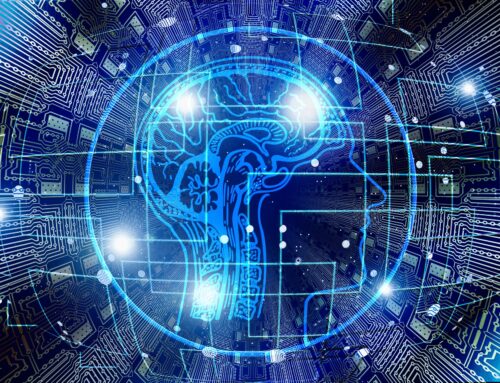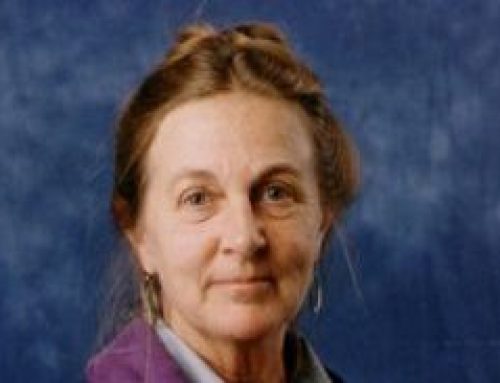The Voice of Experience
Paul Hague, 2018
To download a pdf, please click here.
Abstract
This essay is my contribution as an adviser to the Galileo Commission, which is seeking to promote a spiritually informed science, beyond a materialistic worldview. It outlines how I have applied Self-reflective Intelligence and the semantic modelling methods of information systems architects in business to solve the ultimate justification problem, called Letztbegründungsproblem in German. Rather than starting with the assumption that valid scientific method cannot avoid assumptions, the creative power of Life and the Logos have guided me to develop a nonaxiomatic, holotropic, and holographic system of thought that emerges directly from the Divine Origin of the Universe, providing the Cosmic Context, Gnostic Foundation, and coordinating framework for all knowledge in all cultures and disciplines at all times.
The justification for what I call Integral Relational Logic as sound rational science is based on the intuitive human experience of conducting a thought experiment in which I imagine that I am a computer that switches itself off and on again, so that it has no programs within it, not even a bootstrap program to load the operating system. Starting from a tabula rasa, this computer then has the task of integrating all knowledge into transcultural and transdisciplinary Wholeness without an external programmer telling it how to perform this task. This experiment in coherent learning, healing my fragmented mind and split psyche, thus shows that we humans have the potential to awaken our intelligence far beyond any level that machines with so-called artificial intelligence might aspire to attain.
In the Voice of Experience, R. D. Laing wrote, “The scientific objective world is not the world of real life. It is a highly sophisticated artifact, created by multiple operations which effectively and efficiently exclude immediate experience in all its apparent capriciousness from its order of discourse.”1 And in The Politics of Experience, he wrote, “In a world where the normal condition is one of alienation, most personal action must be destructive both of one’s own experience and that of the other.”2 Similarly, a central theme running through Erich Fromm’s The Sane Society, as a successor to hisn wartime The Fear of Freedom, is alienation, from Latin alius ‘other’, defined in this way:
By alienation is meant a mode of experience in which the person experiences himself as an alien. He has become, one might say, estranged from himself. He does not experience himself as the center of his world, as the creator of his own acts—but his acts and their consequences have become his masters, whom he obeys, or whom he may even worship. The alienated person is out of touch with himself as he is out of touch with any other person.3
Under these circumstances, if we see each other as separated beings, fighting for a slice of the finite monetary cake, rather than interrelated as cooperating cells in the body politic,4 how can I effectively do my job as an information systems architect in business? For the primary purpose of such ‘master builders’, as generalists working with specialists, is to design and develop coherent business systems that are in harmony with the fundamental laws of the Universe, experienced as Consciousness, turning evolutionary divergence into convergence, much as Pierre Teilhard de Chardin prophesied in The Human Phenomenon.
But political institutions, including those like the Royal Society of London for Improving Natural Knowledge, are lagging far behind, not awarely (intelligently and consciously) adapting to our rapidly changing environment, which we scientists and technologists are creating. So while our inventions have given us the most amazing creature comforts, they are also damaging our health and well being, not helping us to prepare wisely for near-term extinction.5 Because of our cultural conditioning and wide-spread alienation from the True Nature and Authentic Identity that we all share, for the most part we are failing to realize our fullest potential as humans, far beyond the capabilities of machines, like computers.
I raise this issue because in order to obey the economic imperative of our times, replacing as many jobs performed by humans by machines as possible, one task of information systems architects is to developn models of dynamic business processes, such as designing, manufacturing, marketing, ordering, and invoicing, and their relationships to each other, as well as integrated models of static classes of information in enterprises, such as employees, customers, products, locations, and deliveries. At first, these are very abstract models, not concerned whether humans or machines perform business processes. This distinction is only made at the implementation stage of systems development.
However, in general these mapmaking methods are not deep and broad enough to produce a complete map of the psychodynamics of business enterprises. To develop a comprehensive, all-inclusive conceptual model or cognitive map, information systems architects need to awarely model their own mapmaking processes. Intelligently thinking in this healthy way is rather like a television camera filming itself filming, which looks impossible, brilliantly illustrated by M. C. Escher’s famous lithograph ‘Drawing Hands’.6 For which comes first, the territory or the map?
The conventional scientific view is that the territory comes first. For instance, in 1931, when commemorating the centenary of James Clerk Maxwell’s birth, Albert Einstein wrote, “The belief in an external world independent of the perceiving subject is the basis of all natural science.”7 Similarly, at about the same time, Alfred Korzybski made the famous assertion, “A map is not the territory it represents, but, if correct, it has a similar structure to the territory, which accounts for its usefulness.”8
Yet, by 1945, Einstein wrote in a letter to Jaques Hadamard that words and others symbols in his external world only appear at a secondary stage of creativity, after the inner combinatory play of conceptual elements emerges in consciousness.9 Similarly, David Bohm pointed out in Wholeness and the Implicate Order, which unified quantum and relativity theories, “The word theory derives from the Greek theoria, which has the same root as theatre, in a word meaning ‘to view’ or ‘to make a spectacle’. Thus it might be said that a theory is primarily a form of insight, i.e. a way of looking at the world, and not a form of knowledge of how the world is.”10
But who or what is doing the looking? How can we resolve our sense of alienation by including our cognitive mapmaking in the territory being mapped? Well, Bohm and J. Krishnamurti attempted to do so in a series of dialogues in the 1960s and 70s, being attracted to each other by the principle that the observer and observer are one.11 The pre-eminent Christian mystic Meister Eckhart expressed this resolution with these words: “The eye with which I see God is the same as that with which he sees me.”12
For myself, I call our human ability to see ourselves seeing—sometimes called the Witness in spiritual circles—Self-reflective Intelligence, the Divine quality that distinguishes humans from the other animals and machines, like computers with so-called artificial intelligence. In my terminology, Intelligence—the ability to see both sides of any situation—is the eyesight of Consciousness, which provides the coherent light to view the Totality of Existence holographically, somewhat like a laser.


